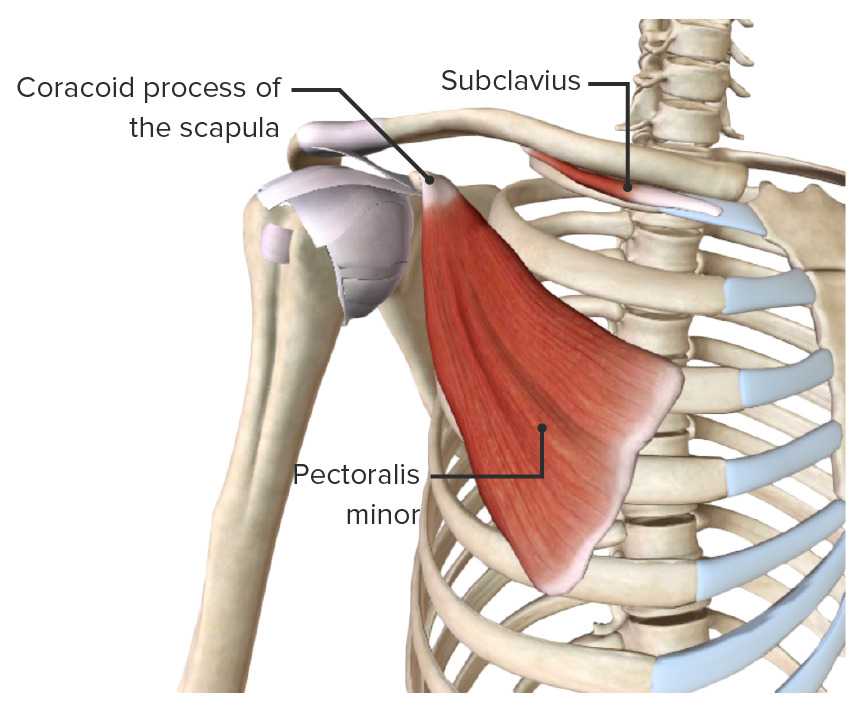Playlist
Show Playlist
Hide Playlist
Acromioclavicular Joint
-
Slide Acromioclavicular Joint.pdf
-
Reference List Anatomy.pdf
-
Download Lecture Overview
00:01 If we then, move on to the acromioclavicular joint, again, as its name suggests, this is between the acromion of the scapula and the distal acromial end of the clavicle. 00:14 So, the acromial clavicular joint. Here, we can see the two articular surfaces and we have some again, some ligaments helping to reinforce this joint. 00:23 We have the acromioclavicular ligaments which we can see here and that is helping to form part of the joint capsule. 00:29 Running inferiorly, we have the coracoacromial ligament that's helping to hold this in position. 00:36 We have a ligament extending not to the clavicle but to the coracoid process of the scapular. 00:43 We also have holding the clavicle against this location, the coracoclavicular ligament. 00:49 So, we can see these positioned here in green. There's actually two parts to this. 00:53 There's the trapezoid ligament and the conoid ligament. 00:57 And they are all forming part of that coracoclavicular ligament. 01:01 What these are all doing is really helping to hold this shoulder in tight position, helping to give it clear integrity and a firmness. 01:11 Because actually, the ball and socket joint of the glenohumeral joint is quite mobile and this helps to provide that scapula with that solid foundation for that articulation to take place. 01:23 If we have a look at the movement of this joint, again, we can see we have a slight bit of elevation and depression. 01:28 And again, we can also see some protraction and retraction, similar to the sternoclavicular joint we saw previously. 01:35 Again, there's minimal amount of axial rotation at this joint.
About the Lecture
The lecture Acromioclavicular Joint by James Pickering, PhD is from the course Joints of the Upper Limbs.
Included Quiz Questions
Which ligament reinforces the acromioclavicular joint superiorly?
- Acromioclavicular
- Coracoacromial
- Coracoclavicular
- Costoclavicular
Which ligament has parts called the conoid and trapezoid ligaments?
- Coracoclavicular
- Coracoacromial
- Acromioclavicular
- Coracohumeral
- Costoclavicular
Customer reviews
5,0 of 5 stars
| 5 Stars |
|
5 |
| 4 Stars |
|
0 |
| 3 Stars |
|
0 |
| 2 Stars |
|
0 |
| 1 Star |
|
0 |




